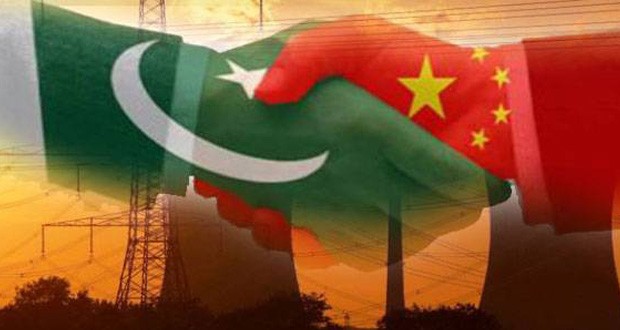Adnan Aamir
In a ground breaking agreement last November, the Chinese government committed to invest over $45 billion in China-Pak Economic Corridor (CPEC). This corridor will connect Gwadar with Chinese city of Kashgar in the Xinjiang autonomous region, through highways, rail link and oil-gas pipelines. This project was dubbed as a “game changer” by Prime Minister Nawaz Sharif for the region. Recently, CPEC has been in news for its proposed change in route. This proposal has made this entire project controversial from the outset.
The new proposed route bypasses a major portion of Balochistan and Khyber Pakhtunkhwa (KP). This change has triggered opposition from politicians of both western provinces. Presently there are three possible routes for this corridor; eastern-route, western-route and a third alternative route.
The government has decided to go on with the eastern-route. This will connect Gwadar with Kashgar via Gadani-Khuzdar-Ratodero-Sukkur-Multan-Lahore-Islamabad-Havelian and then Karakoram Highway which extends to Kashgar. Federal Minister of Planning and Development Ahsan Iqbal claims that the eastern route has been chosen at the behest of the Chinese government.
The western-route for CPEC stretches from Gwadar to Kashgar via Awaran-Ratodero-Naseerabad-Dera Bugti-DG Khan-DI Khan-Swat and it joins Karakoram Highway at Gilgit. This route is not much different from the eastern-route in bypassing majority of the areas in Balochistan.
A third alternative route connects Gwadar to Kashgar via Turbat-Panjgur-Kalat-Quetta-Zhob-DI Khan-Swat and Gilgit. Politicians from Balochistan and KP are demanding that CPEC should be built on this third alternative route. The government, however, claims that the original route for the corridor was the western-route. As a result, confusion still surrounds the original route of this corridor.
There are two factors that need to be considered while choosing the route. The first factor is feasibility. Based on this factor, no doubt, eastern-route is most feasible. Existing road and railway infrastructure, in Sindh and Punjab, will be used in case of easter-Route. Terrain is rigid and extremely difficult for construction on both western and third route. So, eastern route will be completed in shorter period with less costs and hurdles.
Second factor to be considered is the political factor. This proposed corridor is not called game-changer without any reason. It would bring massive development over the course of time in all the areas it touches, and beyond. Choosing the eastern-route would deprive Balochistan and KP of the economic benefits of CPEC. Punjab and Sindh are relatively developed as compared to Balochistan and KP. Choosing the eastern-route will further broaden the economic disparity in favour of Sindh and Punjab. This will consequently aggravate inter-provincial discord. It would further reiterate the assertion that Nawaz Sharif only protects the interests of his constituency ie north Punjab. Therefore, the eastern-route should be avoided at all costs, for political reasons.
Oft-forgotten and the most important stakeholders in this debate are the people of Gwadar. Gwadar is the centre of attention for this entire corridor but ground realities in Gwadar paint a different picture altogether. There is an acute shortage of clean drinking water, lack of basic health care facilities and almost zero employment opportunities in Gwadar city. In such a situation, people of Gwadar would resent any project that would not benefit them. Member of National Assembly from Gwadar, Essa Noori, rejects the project as a means of exploitation and converting local population into a minority. Development of Gwadar is a pre-requisite for successful accomplishment of the Economic Corridor Project and government has, thus far, shown no inclination towards it.
Not everyone has high hopes from the proposed economic corridor. Siddique Baloch, Editor-in-Chief of Balochistan Express, veteran journalist and expert on economic affairs, terms controversy on route change of CPEC as “nonsensical.” According to him, this proposed corridor will pass through Gilgit-Baltistan which is a disputed territory according to constitution of Pakistan and UN resolutions relating to Kashmir. He believes that China would never use a corridor, in the long-term, which passes through a disputed territory. He maintains that China is eyeing the Chabahar port in Iran, situated at a distance of 100 KM from Gwadar, for transit trade.
Will the prophesy of Mr Baloch prove true? Only time will tell. Meanwhile, a decision has to be made on the route quickly because construction work on certain parts of the corridor has already commenced. In the best interests of Pakistan, the third route should be chosen. This decision will result in economic development of Balochistan and KP, which will create economic parity among federating units. This, in turn, will strengthen the federation.
Success of CPEC depends on the support of people of Gwadar for this project. That can only be achieved by developing Gwadar in the real sense. All the politicians and members of civil society who are protesting for change in route of CPEC should, therefore, also protest for much-needed development work in Gwadar.
Courtesy: Pakistan Today
Republished in The Balochistan Point on February 8, 2015
 Balochistan Point Voice of Nation
Balochistan Point Voice of Nation




